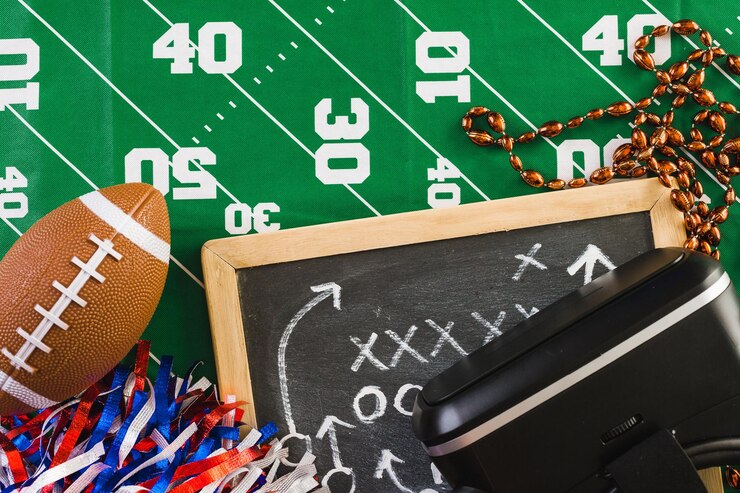Unsuccessful Draft Picks: Learning from Mistakes in Sports
In the realm of sports, draft picks are akin to the building blocks of a team’s future. Each selection represents an investment in talent, potential, and the hope of success. However, not every draft pick pans out as expected. In fact, some picks turn out to be outright disappointments, failing to meet the lofty expectations placed upon them. These unsuccessful draft picks serve as cautionary tales, offering valuable lessons for teams, players, and fans alike.
Historical Context of Unsuccessful Draft Picks
The phenomenon of unsuccessful draft picks has a rich historical background spanning various sports leagues and eras. Since the inception of organized drafts, teams have grappled with the challenge of identifying and selecting talented prospects while navigating the uncertainties of player development and performance.
Throughout history, there have been countless instances of draft picks failing to meet expectations, despite high hopes and thorough scouting efforts. From early rounds to late-round selections, no part of the draft is immune to the risk of disappointment.
Over the years, factors contributing to unsuccessful draft picks have evolved, reflecting changes in scouting methodologies, player evaluation techniques, and the competitive landscape of sports. Despite advancements in technology and analytics, the inherent unpredictability of human performance remains a constant challenge for teams and talent evaluators.
Moreover, the historical context of unsuccessful draft picks is intertwined with broader trends in sports culture, including the increasing pressure for immediate results, the impact of media scrutiny, and the rise of social media influence on player perception.
Despite the setbacks and disappointments associated with unsuccessful draft picks, they serve as valuable learning opportunities for teams, players, and fans alike. By understanding the historical patterns and root causes of draft failures, stakeholders can better navigate the complexities of the draft process and strive for success in the ever-evolving landscape of sports.
The Hype and Hope of the Draft
The annual draft in any sport is a time of excitement and anticipation. Teams meticulously scout prospects, analyze statistics, and conduct interviews to identify the next big star. Fans eagerly await the announcement of each pick, envisioning how these new talents will transform their beloved team.
The Reality of Unsuccessful Picks
Despite the careful planning and scrutiny, not every draft pick lives up to the hype. Some players struggle to adapt to the professional level, while others succumb to injuries or off-field issues. The reasons for their failure are varied, but the result is the same: unfulfilled potential and dashed hopes.
Factors Contributing to Unsuccessful Picks
Several factors can contribute to the failure of a draft pick. Lack of talent evaluation, poor fit within a team’s system, injuries, character issues, and unrealistic expectations are just a few examples. Additionally, the pressure to perform in a highly competitive environment can weigh heavily on young athletes, affecting their confidence and performance.
Case Studies of Unsuccessful Picks
Throughout the history of sports, there have been numerous examples of draft picks that failed to live up to expectations. From highly touted prospects who never lived up to their potential to first-round busts who flamed out of the league, these stories serve as cautionary tales for teams and players alike.
Example 1: The High Draft Pick That Flopped
One classic example is the highly anticipated quarterback selected with the first overall pick in the NFL draft. Despite being hailed as a generational talent, injuries and poor performance plagued his career, leading to his eventual release from the team that drafted him.
Example 2: The Under-the-Radar Bust
In contrast, there are also cases of lesser-known prospects who failed to make an impact despite being selected in later rounds of the draft. Whether due to a lack of opportunity, poor coaching, or simply not being the right fit for the team, these players serve as reminders that success in sports is never guaranteed.
Lessons Learned and Moving Forward
While the sting of an unsuccessful draft pick may linger, there are valuable lessons to be gleaned from these experiences. Teams must continually refine their scouting processes, prioritize character and fit over raw talent, and manage expectations for young players. Similarly, athletes must remain resilient in the face of adversity, learn from their mistakes, and continue to strive for improvement.
Certainly! “Lessons Learned and Moving Forward” refers to the process of reflecting on past experiences, especially mistakes or failures, and using those insights to make better decisions and progress in the future. In the context of the article on unsuccessful draft picks, this section emphasizes the importance of analyzing the reasons behind draft failures, identifying areas for improvement, and implementing changes to prevent similar mistakes in the future.
For teams, this may involve refining their scouting processes, prioritizing character and fit over raw talent, and managing expectations for young players. Similarly, athletes must reflect on their performance, learn from their mistakes, and continue to strive for improvement, resilience, and growth. The goal is to approach future drafts with greater wisdom and readiness, guided by the lessons learned from past experiences.
Conclusion
Unsuccessful draft picks are an inevitable part of the sports landscape, But they need not define a team or player’s legacy. By acknowledging the shortcomings of the past, Teams and players can chart a course for future success, guided by the lessons learned from their mistakes.
FAQs
Can unsuccessful draft picks ever redeem themselves?
Yes, some players bounce back from early setbacks to have successful careers. It often requires resilience, hard work, and the right support system.
How do teams mitigate the risk of drafting a bust?
Teams employ various strategies, including thorough scouting, psychological evaluations, and character assessments, to minimize the risk of selecting a bust.
What role does coaching play in the success of a draft pick?
Coaching can have a significant impact on a player’s development and performance. Good coaching can help maximize a player’s potential, while poor coaching can hinder their progress.
Are there any notable examples of draft picks who exceeded expectations?
Yes, there are many examples of draft steals—players selected later in the draft who went on to have successful careers. Sometimes even surpassing the performance of higher picks.
How do unsuccessful draft picks affect team morale?
Unsuccessful draft picks can be disappointing for both the team and its fans. However, a resilient team can use these setbacks as motivation to improve and succeed in the future.







